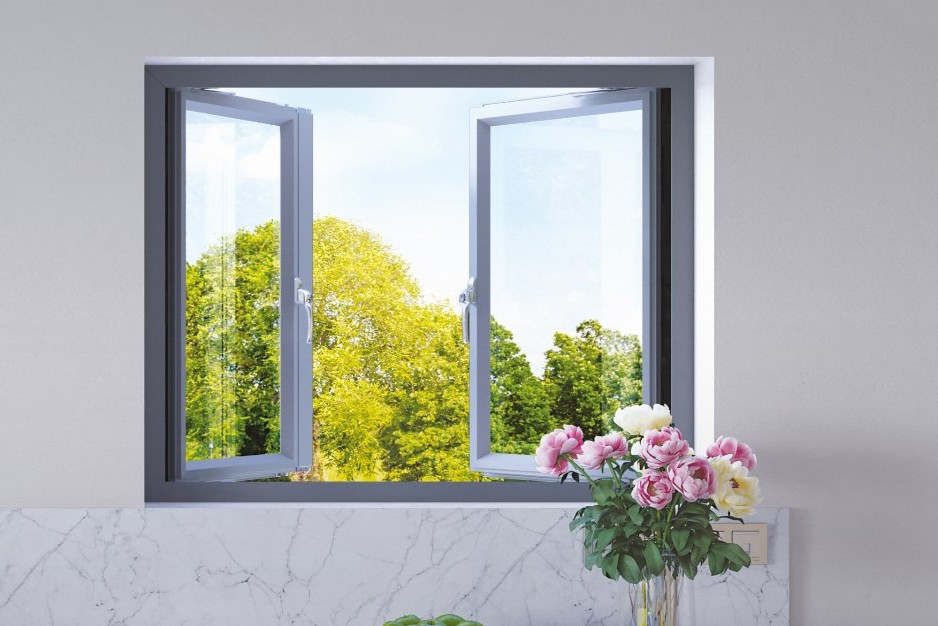Standard window sizes play a crucial role in the overall design and functionality of a building. Whether you are constructing a new home or renovating an existing one, understanding the importance of standard window sizes is essential. In this article, we will delve into the world of standard window sizes, exploring their significance, common sizes in the industry, factors to consider when choosing them, and the pros and cons of custom versus standard sizes.
Understanding the Importance of Standard Window Sizes
What exactly is a standard window size? A standard window size refers to a set of dimensions commonly used in the industry. These sizes are standardized to ensure compatibility with off the shelf window products and simplify the construction process. By adhering to standard window sizes, builders and homeowners can easily find and install windows without the need for custom fabrication, saving time and money.
One of the primary benefits of standard window sizes is their availability. Since these sizes are widely used, manufacturers produce a vast range of window styles and materials to fit them. This abundance of options allows homeowners to choose from a variety of designs, such as double hung, casement, or bay windows, while still maintaining the convenience of standard sizes.
Another advantage of standard window sizes is that they simplify the replacement process. If a standard sized window needs to be replaced due to damage or wear and tear, finding a replacement is relatively straightforward. Homeowners can visit local hardware stores or contact window suppliers and easily find a suitable replacement that matches the existing measurements.

Common Standard Window Sizes in the Industry
The window industry has established several standard sizes that are commonly used in residential and commercial construction. These sizes vary depending on the type of window and its intended location. Let’s explore some of the most prevalent standard window sizes:
- Single hung and double hung windows: These traditional windows feature two sashes, with single hung windows having only the lower sash operable, while double hung windows allow both sashes to move. Common single hung window sizes include 24×36 inches, 30×36 inches, and 36×48 inches. Standard double hung window sizes range from 24×36 inches to 48×72 inches.
- Casement windows: Casement windows open sideways on hinges and are operated with a crank. Standard casement window sizes range from 24×36 inches to 48×72 inches.
- Sliding windows: Sliding windows, also known as gliding windows, slide horizontally to open and close. Common standard sliding window sizes include 36×24 inches, 48×36 inches, and 72×48 inches.
- Picture windows: Picture windows are fixed windows that do not open or close. Their purpose is to provide unobstructed views and natural light. Standard picture window sizes typically range from 24×36 inches to 96×72 inches.
These are just a few examples of standard window sizes, and it is important to note that regional variations and specific architectural requirements may influence the sizes used in certain areas.

Factors to Consider When Choosing Standard Window Sizes
When selecting standard window sizes for your home, there are several factors to consider. These factors will help ensure that the chosen sizes align with your practical needs, architectural style, and personal preferences. Let’s explore the key considerations:
- Functionality: Consider how you want your windows to function. Do you prefer windows that open for ventilation, or are fixed windows more suitable for your needs? Think about the purpose of each window in different rooms and select sizes that accommodate your desired functionality.
- Aesthetics: Windows contribute to the overall aesthetics of your home. Consider the architectural style and design elements of your house when choosing standard window sizes. For example, traditional style homes may benefit from double hung windows, while modern homes might feature expansive picture windows.
- Natural Light: The size and placement of windows significantly impact the amount of natural light that enters your home. If you desire abundant natural light, consider larger windows or multiple windows in a room. Balancing natural light with privacy concerns is also crucial.
- Energy Efficiency: Windows play a vital role in the energy efficiency of your home. Look for windows with high quality insulation and energy efficient features, such as low emissivity coatings and double or triple glazing. Ensure that the standard sizes you choose can accommodate these energy saving features.
By carefully considering these factors, you can select standard window sizes that not only meet your functional needs but also enhance the overall aesthetics and energy efficiency of your home.
Custom vs Standard Window Sizes: Pros and Cons
When it comes to window sizes, homeowners often face the dilemma of choosing between custom and standard options. Each option has its own set of advantages and disadvantages. Let’s explore the pros and cons of custom and standard window sizes:
Custom Window Sizes:
Pros:
- Perfect Fit: Custom sized windows are tailored to fit the exact dimensions of your window openings, ensuring a precise fit.
- Design Flexibility: Custom sizes allow you to create unique and unconventional window designs that complement your architectural style.
- Maximize Glass Area: Custom sizes enable you to maximize the glass area and enhance the natural light entering your home.
Cons:
- Higher Cost: Custom sized windows are typically more expensive than their standard counterparts due to the additional labor and materials required for fabrication.
- Longer Lead Time: Custom windows often have longer lead times as they need to be manufactured according to specific measurements, which can delay your construction or renovation timeline.
Standard Window Sizes:
Pros:
- Cost Savings: Standard sized windows are readily available and mass produced, resulting in lower costs compared to custom sizes.
- Easy Replacement: If a standard sized window needs to be replaced, finding a suitable replacement is relatively simple, saving time and hassle.
- Abundance of Options: Standard sizes offer a wide range of window styles, materials, and designs, allowing you to choose from numerous options.
Cons:
- Limited Design Flexibility: Standard sizes may not always align perfectly with your architectural vision, limiting your design choices.
- Potential Compromises: In some cases, you might need to compromise on certain aspects, such as glass area or functionality, when working with standard sizes.
Understanding these pros and cons will help you make an informed decision regarding whether to opt for custom or standard window sizes for your home.

How to Measure for Standard Window Sizes
Accurate measurements are crucial when selecting standard window sizes for your home. Follow these steps to measure your window openings correctly:
- Width Measurement: Measure the width of the window opening from the inside of the left jamb to the inside of the right jamb. Take three measurements at the top, middle, and bottom of the opening, and use the narrowest measurement as your width.
- Height Measurement: Measure the height of the window opening from the inside of the head jamb to the inside of the sill. Again, take three measurements on the left, center, and right sides of the opening, and use the shortest measurement as your height.
- Depth Measurement: Measure the depth of the window opening, also known as the jamb depth. This measurement is essential for ensuring that the window frame fits properly within the wall.
- Additional Considerations: Take note of any obstructions, such as handles, locks, or trim, that might affect the window size or operation. Consider these factors when selecting standard window sizes.
It is recommended to double check your measurements to ensure accuracy before purchasing or ordering windows. If you are unsure about the measurement process, consulting a professional window installer can provide valuable guidance.
Common Misconceptions About Standard Window Sizes
Despite the prevalence of standard window sizes, there are a few common misconceptions surrounding them. Let’s debunk these misconceptions to ensure a clear understanding:
- All windows in a house should be the same size: While uniformity can create an aesthetically pleasing look, it is not necessary for all windows to be the same size. Different rooms and areas of your home might require varying sizes based on their function, architectural style, and natural light requirements.
- Standard sizes limit design creativity: Although standard sizes offer a range of options, they do not necessarily limit design creativity. With careful planning, you can incorporate standard sized windows into unique and visually appealing designs that suit your style.
- Standard sizes are always readily available: While standard sized windows are generally more accessible, it is important to consider regional variations and stock availability. Custom ordering might be necessary if specific styles or sizes are not readily available in your area.
By dispelling these misconceptions, you can approach the selection of standard window sizes with a more informed and open mindset.
Window Size Regulations and Building Codes
In addition to considering functionality, aesthetics, and personal preferences, it is vital to understand window size regulations and building codes in your area. Building codes dictate the minimum window size requirements for safety, emergency egress, ventilation, and natural light. These regulations ensure that homes adhere to certain safety standards and provide a comfortable living environment.
The specific requirements vary based on the location, type of room, and purpose of the window. For example, bedrooms typically have stricter regulations compared to common areas or bathrooms. It is essential to consult your local building department or a qualified professional to understand the regulations applicable to your project.
By adhering to window size regulations and building codes, you can ensure that your home meets the necessary safety and functionality standards while enjoying the benefits of standard window sizes.
Finding the Right Standard Window Size for Your Home
With the abundance of standard window sizes available, finding the right fit for your home can seem overwhelming. To simplify the process, consider the following steps:
- Assess Each Room: Evaluate the purpose and requirements of each room. Consider factors such as natural light, ventilation needs, privacy, and views. These considerations will guide you in selecting the appropriate window sizes.
- Research Standard Sizes: Familiarize yourself with the common standard window sizes discussed earlier in this article. Additionally, consult local window suppliers and manufacturers to understand the range of sizes available in your area.
- Seek Professional Advice: If you are unsure about the best window sizes for your home, consult with a professional architect, designer, or window specialist. Their expertise will help you make informed decisions based on your specific requirements and project goals.
- Combine Standard Sizes: In certain cases, combining multiple standard sized windows can create a unique and visually appealing effect. Consider using different window sizes in combination to achieve your desired architectural style and functionality.
By following these steps, you can navigate the world of standard window sizes more confidently and find the perfect fit for your home.
Conclusion: Making Informed Decisions About Standard Window Sizes
In conclusion, standard window sizes are an integral part of any construction or renovation project. By understanding their importance, exploring common sizes in the industry, considering critical factors, and dispelling misconceptions, you can make informed decisions when selecting standard window sizes for your home.
Remember to assess functionality, aesthetics, natural light requirements, and energy efficiency when choosing standard window sizes. If needed, consult professionals and be mindful of window size regulations and building codes to ensure compliance and safety.
Whether you opt for custom or standard sizes, finding the right windows for your home will enhance its overall design, functionality, and comfort. With the knowledge gained from this article, you can confidently embark on your window selection journey and create a space that is both visually appealing and optimized for your needs.
Start exploring standard window sizes and transform your home today!



